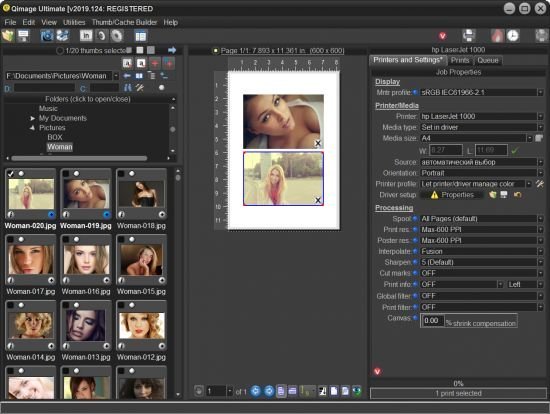

Open the full page editor and click once on the Test Strip button. This is because a 16x20 print is not going to fit on a 3.766 x 5.766 page and Qimage will automatically tile the image and print it on multiple sheets. Now when I add the image to the queue a 5x4 (arrow below) appears in the top left corner of the image. If I don't have that as one of the pre-defined choices in the pull-down list, I choose "Custom" and get this menu where I can choose "Enter specific SIZE" and specify the size: Let's pretend I have an R3800 printer and want a 16x20 print. Specify 4圆 as your paper size (with my printer the actual page size is 3.766 x 5.766 after subtracting the minimum borders): The second technique is even easier, but works better when you're printing a standard size print, not a borderless print. the 4圆 sheet was just the upper left corner of the 13x19 area so I needed to put my test area in that corner): I found I also had to grab the image on the left and drag it to the top left corner (unless I did, nothing printed on my 4圆 sheet. Next grab (click on and hold) the image on the right and drag it around until the area you want to see on your test print appears: Keep clicking on Test Strip until the print size (arrow below) is less than 4圆: When you click on Test Strip the crop gets tighter and the print size gets smaller:Įach time you click on Test Strip the print size continues to get smaller:

The "Test Strip" icon looks like little calipers (red arrow above). If you don't, be sure you are looking at the cropping tab (blue arrow above).

Next open the full page editor (arrow above) and you should see: A test strip is an inexpensive way to review a critical area of a print before wasting lots of ink and paper. I've also found that when touching up portraits there are things I don't see until I make a print. Reviewing quality, detail, sharpness, and color are all reasons to print a test strip. no normal person would view a 13x19 image from 8 inches away anyway. My experience is that even prints made at around 90 PPI look good viewed at a normal distance. Whenever you add images to the queue, Qimage reports the pixels per inch (PPI) for the image:Īlthough many say you need 200 or more pixels per inch for a good quality print, you'll find that with 125 or more PPI Qimage you will ALWAYS give you high quality print.

And for borderless, always be sure auto-cropping (arrow above) is on. After choosing the borderless page size in printer setup, choose "Fit to page" as the print size.
Qimage one review driver#
You'll note that the driver reports the exact page size back to Qimage (it's not exactly 13x19, instead its 12.952 x 19.014). Here I've told my printer driver I want to make a 13x19 borderless print: There are several ways to print a test strip (see Qimage help), here are the two I use: It's often overlooked, but Qimage has a "Test Strip" feature which allows you to do exactly the same thing. Before you waste a big sheet of paper, you print a critical area on a small sheet to make sure you're going to be happy with the result. Anyone who has worked in a darkroom knows the value of test strips.


 0 kommentar(er)
0 kommentar(er)
